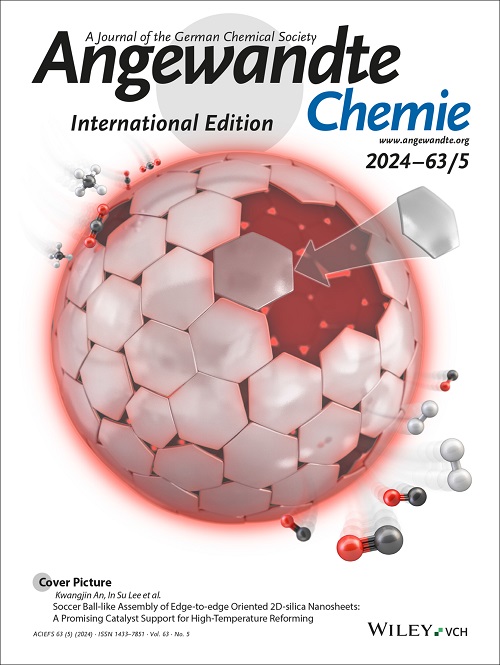Chemocatalytic Cell Tagging Platform for Recording Cell-Cell Interactions via Engineered Palladium Based Artificial Metalloenzymes
IF 16.1
1区 化学
Q1 CHEMISTRY, MULTIDISCIPLINARY
引用次数: 0
Abstract
Proximity labeling platforms (PLPs) have become a powerful tool for studying spatial cell-cell interactions (CCIs) in living organisms. However, their effectiveness often relies on membranal catalytic modules of bait cells, such as natural enzymes or small-molecule photocatalysts, which are typically constrained by complex genetic modifications or the limited applicability of visible light. Here, we present a novel chemocatalytic approach, ArM-Tag, which utilizes an engineered artificial metalloenzyme (ArM) for cell surface-localized tagging. The ArM-Tag system combines a palladium (Pd) cofactor, a lipid anchor, and a streptavidin (SAV) scaffold to catalyze the O-deallylation reaction on the surface of target cells, generating short-lived electrophilic intermediates that label neighboring cells within a micrometer-scale range. By integrating Biotin-SAV technology with directed evolution, we engineered a series of biotinylated Pd complexes and optimized the ArM for efficient catalysis. We demonstrate the power of this approach by applying the ArM-Tag system to selectively record antigen-specific CCIs, specifically showing how CAR-T cells interact with tumor cells through the mesothelin/anti-mesothelin axis. This versatile, non-genetic system provides a powerful tool for probing CCIs and offers exciting prospects for advancing immunotherapy, particularly in targeted cancer treatments and immune cell-based therapies.求助全文
约1分钟内获得全文
求助全文
来源期刊
CiteScore
26.60
自引率
6.60%
发文量
3549
审稿时长
1.5 months
期刊介绍:
Angewandte Chemie, a journal of the German Chemical Society (GDCh), maintains a leading position among scholarly journals in general chemistry with an impressive Impact Factor of 16.6 (2022 Journal Citation Reports, Clarivate, 2023). Published weekly in a reader-friendly format, it features new articles almost every day. Established in 1887, Angewandte Chemie is a prominent chemistry journal, offering a dynamic blend of Review-type articles, Highlights, Communications, and Research Articles on a weekly basis, making it unique in the field.

 求助内容:
求助内容: 应助结果提醒方式:
应助结果提醒方式:


